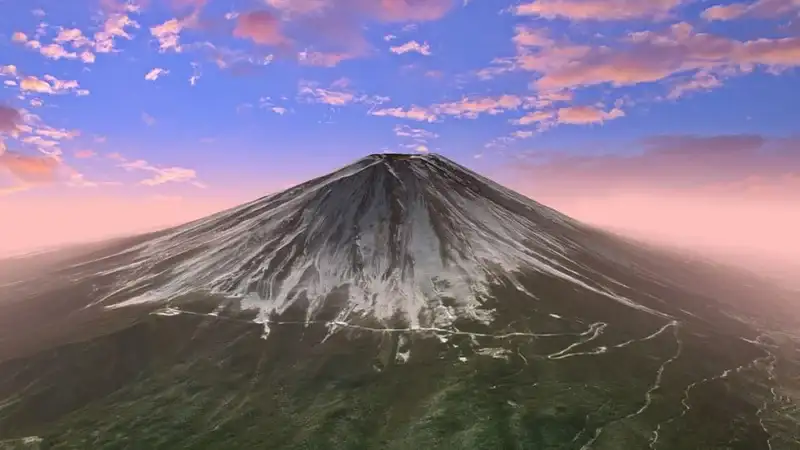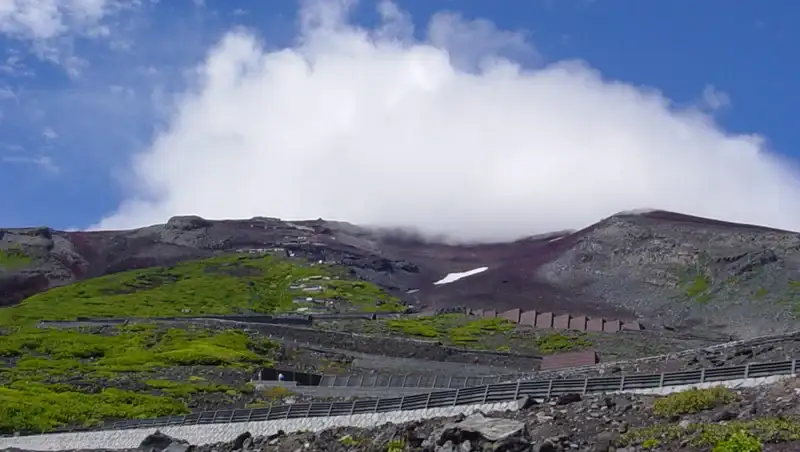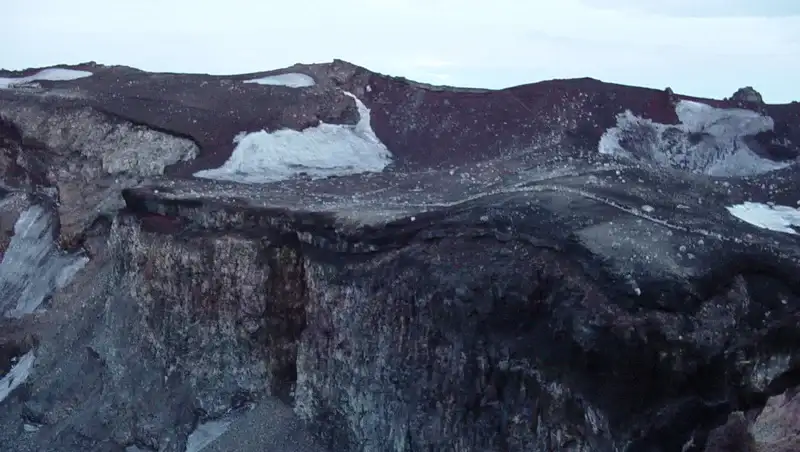Mount Fuji is a very high volcano and this implies a harsh terrain, but this is just a walk up and not a technical climb. I have climbed it myself some time ago, so here you have my first-hand experience and recommendations.
Official climbing season of Mount Fuji is in summer, and this coincides with the rainy period in Japan. This, together with the volcanic terrain, determines the most important pieces of equipment that you need. They include the following:
- A waterproof clothing layer.
- Good hiking or mountaineering boots.
- A day pack.
- A warm underlayer.
- A warm cap and gloves.
The rest is up to you, but you might want to consider also these pieces of equipment:
- A pair of trekking poles.
- A torch if you do an overnight climb.
- Sun glasses.
- A hat.
- UV protection means.
Below, you will find a bit more about these elements.

You might know the saying about generals that are always wise after a battle is over. The same is with me. I climbed Mount Fuji (3776 m, 12388 ft) totally under-equipped, in jeans pants, without proper boots, and even without a torch, although this was a night climb.
But I was not a beginner in mountaineering, it is just that I did not have time to prepare better, and did not want to spend money on equipment for one climb. So I went up with what I had. As for the mentioned torch, well, it is simply that I forgot it in Tokyo.
Rain protection layer
This should imply a rain jacket and waterproof pants. But if you do not have these, you can use a far less expensive waterproof poncho, and if it is long enough it may be enough to protect even your lower body.
However, it is best that you try to wait and have a day with a clear sky, you will have better views, it will be warmer and more pleasant.
Good hiking or mountaineering boots
Needless to say that I did not have them, I went in what I had. But if you are not certain of what you may need, you may consider Lowa Renegade GTX or Salomon boots. I owned them both and this is why I know that they can work well for such a tour.
I used the mentioned Lowa Renegade boots for El Teide climbs, and this is a mountain very similar to Mount Fuji. The picture below shows my view towards the summit in the clouds, this was after I descended the mountain. There is nothing green at higher elevation, it is all pure lava rocks.
Both of these boots are with an out-of-the-box comfort and they do not need much time to break-in. But it is not advisable to use any new boots for any longer tour, bear this in mind. It is enough to use mid-cut boots, and those mentioned above are of that type.

A day pack
I am sure any day pack will do, it does not necessarily have to be a hiking pack. So do not waste money unless it is really necessary.
But if you plan to buy one, I could recommend many options. Perhaps it is best to mention the pack that I use myself as I am sure it will work well. This is Osprey Stratos 24 pack.
A warm underlayer
By this I mean a good fleece jacket. My experience with such stuff is really good. You will definitely need this if your shell jacket is thin.
Be ready for a temperature that is close to zero degrees Celsius. In particular, if it is very windy, having such a layer is a must.
A warm cap and gloves
It is mostly windy on the summit shown in my picture below, and if you climb overnight to get to the summit for the sunrise, it can be cold. This is why you need such warm stuff. But if your shell jacket has a hood, this may be enough.
If it is raining, ordinary gloves will be useless, so make sure you have waterproof ones.

Other stuff
I mentioned trekking poles, so just to add that I did not have them when I climbed Mount Fuji. But I normally always use poles when I go to the mountains.
As for a torch, any will do. On many parts of the route you will have light because there is a series of small huts with light outside.
For such a high mountain it is always good to have things for sun protection. So have a hat, sunglasses, and something for UV protection.
When I was there, I did not make video recording, only photos which you can see in my text. But there are many videos about climbing Mount Fuji, and they provide lots of useful visual information. You might want to watch this one:
Summary
So this is all what I consider essential regarding equipment if you plan to climb Mount Fuji. As for food and drinks, this is up to you. If you follow the Yoshida route, you will have a dozen of huts on the way up, and food and drinks are available also on the summit.
Note that I climbed Mt Fuji solo, so if you plan to do the same please read more about details in my separate text.
Thank you for reading. Subscribe to our weekly newsletter, this will keep you informed because I add texts here regularly. Let me know if you have questions or comments, there is a comment box below. Have a nice day.
Leave a Reply